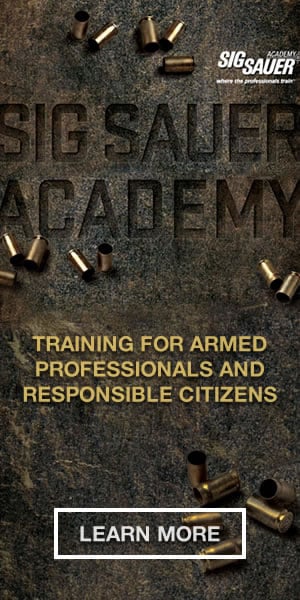There is a reason why cops carry a wide assortment of items on what was at one time, strictly a gun belt, a belt which held only the service revolver and maybe some spare ammo in a belt loop carrier. Even though we still refer to it as our "gun belt", there is a lot more gear there than just the gun, and it is this additional gear that receives far more use than our handgun ever does. Most situations that require the use of force to control suspects do not require deadly force.
Over the years, cop gun belts have evolved into "duty belts" due in a large part to the need for more intermediate force options to supplement the handgun. The big three intermediate force devices carried on our duty belts today are a baton or nightstick, chemical defense spray, and the Taser.
Personal defense for the cop or civilian can be thought of as a triad. The base or foundation of the Defensive Triad is the firearm, whether or not the firearm is to be used for on-property or off-property defense. The second of the three sides is for intermediate defensive tools or options, and the other is reserved for prudent judgment (wise, reasoned, decision making under stress). Consider yourself compromised in a self-defense situation if any of the three sides of the Triad is missing.
There are several law enforcement related intermediate defensive devices available that will allow you to defend yourself effectively without resorting to empty hand techniques. Empty hand control and defense techniques should be thought of as a last ditch option. A martial artist in St. Louis was recently beaten to death by four thugs armed with hammers. He thought he could handle the situation with empty hands, instead of leaving the scene in his car. He overestimated his abilities in this type of situation. Even for the highly skilled, empty hands should be filled with an intermediate force option. One of those options is the civilian Taser C2 conducted energy weapon.
The compact Taser C2 delivers a 50,000 volt low amperage charge through two barbed probes that are connected by a wire back to the Taser unit. The probes lock into the attacker's skin or clothing, and the circuit is closed once energy flows down the wires. I took the standard law enforcement five second Taser "ride" when I was certified as a Taser Instructor. I was totally incapacitated-and totally convinced. There was nothing I could do but yell as I endured the longest five seconds of my life. Oh, and unlike Hollywood depictions, most people are able to get up immediately after Taser exposure and are fully functional.
The C2 retails for around $400 and is available at Vance Outdoors. It has a range of 15 feet, and once fired it runs for 20 seconds (yikes) which allows you to get away while your assailant is otherwise occupied. Taser replaces the C2 free if it is lost in a documented lawful self-defense case. The Taser C2 is also very intimidating if you get the laser sighted model. The suspect (and you) will know where one of the probes is about to hit. The Taser C2 is a great tool and I highly recommend it. However, like anything in life, the C2 has drawbacks, but only two that I can see.
First, both probes must make contact and complete a circuit on the suspect's body for full Neuromuscular Incapacitation to occur. Second, the Taser C2 is a single shot device, not as good for disabling crowds. Yes, it can be reloaded, but not while it is delivering current, unless you also wish to be exposed to it. Still in all, it is a formidable self-defense option for those times when using a firearm is out of the question. The nice part is that the more muscular an attacker is, the worse the Taser current hurts.
The Taser C2 is available with an accessory kit that includes a practice target, a practice cartridge, two live cartridges, and an instruction manual. To date, I have exposed a couple hundred police academy cadets to the five second Taser ride. Not one has ever been able to fight through the Taser effect. Consider it as a solid intermediate force option for your own self-defense triad, or for a loved one who does not want to carry a firearm for defense.


